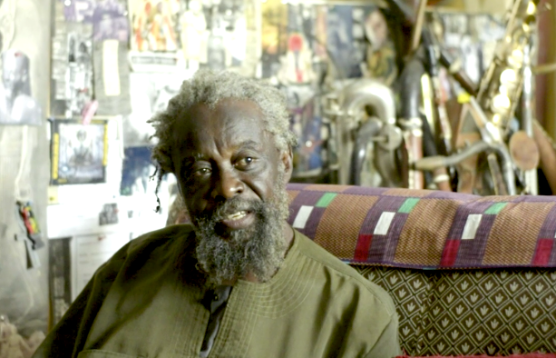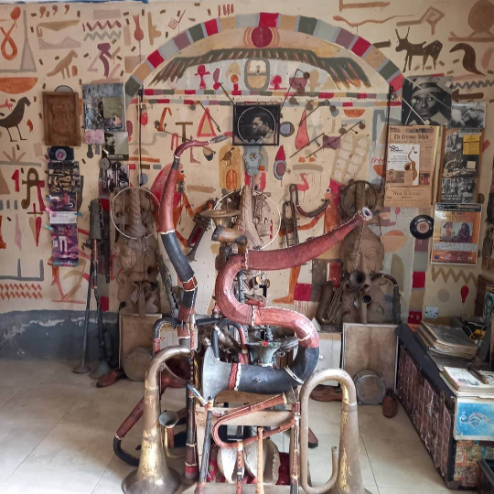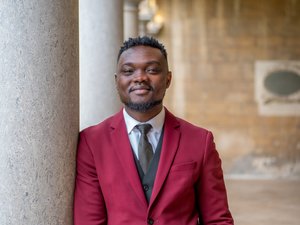Dr Samuel Boateng: Jazz's Global Trajectories and Transnational Connections
The academic study of jazz has traditionally been centered around musical histories and styles originating in the United States, while jazz’s global trajectories and transnational connections have often been sidelined or at best mentioned as mere supporting accounts for the official story. The so-called official history of jazz that emerges from this practice omits other possible interpretations, geographies, identities, and biographies that may be linked to the complicated and varied cultural phenomena we call jazz. For instance, with the exception of a handful of research, Africa and African artists continue to be denied a sustained and meaningful engagement within jazz scholarship beyond the presumed role as primitive originators. Rather than thinking of Africa as the static origin of jazz and the African diaspora, my ethnographic and archival-based research draws on the decades of intercultural collaborations, migration, and cultural encounters between Africa and the African diaspora to document ongoing politics and histories that accompany African people’s entanglement with jazz in Ghana, United States, and Britain. An important figure in my work is the Ghanaian jazz experimentalist, instrument maker, and sculptor Nii Noi Nortey (Fig 1). By following his transnational career and artivism, I document a creative mesh of jazz and Black musics that is accompanied by a cultural and political philosophy which shifts our understanding of Africa from a place of obscurity and primitivism into a realm of subjectivity characterized by Afrodiasporic dialogues and interaction, change, and Pan-African activism.
 Figure 1, Nii Noi Nortey
Figure 1, Nii Noi Nortey
In the late 1960s Nii Noi Nortey migrated from Ghana to England to study economics. While living in London during the 1970s he became a saxophonist by taking inspiration from the avantgarde jazz of John Coltrane, Albert Ayler, and Sun Ra. He subsequently learned to play an assortment of African instruments including the alghaita, ngoni, mbira, and goje, and he developed his own novel horns, the afrifons (Fig 2). In the 1980s, Nortey became a founding member of the popular London-based Afrocentric group known as Dade Krama. As an important mouthpiece in the Black British arts community, Dade Krama situated their music within the wider struggles of African descendent people in Britain and across the diaspora. With occasional funding from the Greater London Council, the group collaborated with various arts collectives to work against racism and apartheid. In 1986, Dade Krama received immense coverage in the British press for their LP titled, Ancestral Voices of Africa, which featured liner notes by South African poet and activist in exile, Pitika Ntuli. Nortey has also been a founding member or collaborator in political and experimental groups such as the British reggae band Misty in Roots, Mokoloko, Metaphorhythms, African Dawn, Anyaa Arts Quartet, Accra Trane Station, the Anyaa Arts Kollektif, Mau Mau Muziki, and also with the Ghanaian master drummer and experimentalist Ghanaba (Guy Warren). Nii Noi Nortey is more than a musician. As an instrument-maker, sculptor, and archivist he has also collaborated with poets, political activists, scholars, photographers, visual artists, filmmakers, leather workers, puppeteers, dancers, and acrobats. The results of this broad-ranging artistic work are documented and exhibited at the Anyaa Arts Library (AAL) (Fig 2), his personal archive and gallery in Ghana.
 Figure 2, “Ankhestra” – Sound Sculpture by Nii Noi Nortey featuring his afrifons at AAL
Figure 2, “Ankhestra” – Sound Sculpture by Nii Noi Nortey featuring his afrifons at AAL
Certainly, within Nortey’s artistic work are opportunities to witness the hybridization of jazz and African musical idioms with other art forms. Further than that however, those projects and the spaces that made them possible provided him with interpretative grounds to think critically about issues of racial equality, Pan-Africanism, the struggle for independence in Africa, and the artist’s mandate to articulate those ideas and systems. By extension, they point to how African artists embody a practice of Black solidarity and articulate new modes of African subjectivity through creativity and community building. As Nortey mentions, “through the influence of jazz as a music form, the African experience in the diaspora, the resilience of it, is a potential in redefining the African essence.” Building on the experiences of Nortey and several other Ghanaian artists, my research takes Black transnational musical collaboration as an opportunity to understand Africans entanglement with jazz, even as they articulate a new “African essence”—one that shapes and is shaped by ongoing global and diasporic experiences, and one that decenters primitivist, Eurocentric epistemes about Africa today.
Nii Noi Nortey’s art and commitment to jazz and Pan-African solidarity can be heard in the attached video clip, which is excerpted from my 2022 documentary film Accra Jazz Dialogues. Combining musical performances with ethnographic interviews, the film documents what Ghanaian musicians mean when they talk about and perform jazz, and it also examines how jazz shapes musical practices, career decisions, and political ideas among Ghanaian musicians in the capital city of Accra. The 56-minute-long project features musicians such as Nii Noi Nortey, the Ghanaian-Finnish saxophonist Jimmy Beckley and his jazz combo, and members of the Ghana Jazz Collective. In the clip, Nortey reflects on the trajectory of his musical, cultural, and political activism in Africa and the UK. He emphasizes how Afrodiasporic political and cultural threads have shaped his own revolutionary ideologies and approaches to grassroots musicking and community outreach. He concludes by discussing his longstanding commitment to archival practices that are aimed at documenting various artistic collaborations, while highlighting the need for institutional and private support in sustaining such cultural projects.
If you'd like to learn more about Dr Boateng's research, visit his profile here.
